Asia/India/29 octubre 2016/Autor: Joseph Confavreux/Fuente: Rebelión
–Escribe que India es actualmente una superpotencia como las otras, «con bombas nucleares y una escandalosa desigualdad»… En 1988, en El fin de la imaginación, ya había declarado:»Si protestar contra la instalación de una bomba nuclear en mi cabeza es antihindú y antipatriótico, entonces yo me separo. Por la presente me autoproclamo república itinerante independiente». Casi 20 años después, ¿cómo es su relación con India?
–En India, el discurso nacionalista se ha convertido en terrorífico; eso ha desembocado en ensayos nucleares. Quienes no han celebrado esto como una señal de una gran nación han sido acusados de traición. La diferencia es que quienes estigmatizaban como antihindú a los pocos que no comulgaban con el culto de la gran potencia nuclear hoy están instalados en el poder y atrincherados detrás de sus convicciones de extrema derecha. Claro, la región está lejos de la situación siria o iraní, pero un gobierno con Modi a la cabeza, azuzando el conflicto en Cachemira y la tensión con Pakistán, ofrece razones para inquietarnos porque ahí se habla de potencias que poseen bombas nucleares.
–¿Está personalmente en el punto de mira de los nacionalistas hindúes?
–El gobierno opera subcontratando su descontento frente a las voces divergentes a la gente. Así se organizó una manifestación delante de mi domicilio organizada por el ala femenina del BJP, pidiendo mi detención. Y en el último abril, los estudiantes de la universidad Nerhu organizaron una discusión por el ahorcamiento del cachemir Afzal Guru, sobre el que escrito varios textos. Algunos grupos increparon a los estudiantes y un periodista de una cadena en continuo preguntó: ¿Quién está detrás de todo esto? ¿Por qué está aún en libertad? Los medios de comunicación propiedad de grandes empresas intiman a las voces independientes a callarse y el gobierno subcontrata la censura a la multitud encolerizada.
–¿Cómo explicar que el crecimiento exponencial de India haya desembocado en una situación en la que las 100 personas más ricas del país detentan más de un cuarta parte del PIB? ¿Por qué la teoría del «trickle don», según la cual el crecimiento permite que la riqueza «gotee» hacia las clases desfavorecidas, se ha revelado falsa y, al contrario, hemos asistido a un masivo «gushup»(literalmente, surgimiento), proceso por el cual la concentración de la riqueza opera en detrimento de las clases pobres?
–Eso ocurre en todo el mundo; eso se llama capitalismo; no es necesario tener un diploma en economía para comprenderlo. Pero en India, este fenómeno es doble porque, al contrario que el desarrollo chino permitido por la producción y exportación de bienes manufacturados, el crecimiento indio se basa enteramente en la extracción de recursos naturales y minerales. Históricamente, los británicos y los franceses han colonizado el mundo para extraer sus preciados recursos. Hoy, en India, una elite está colonizando su propio país. Además, el capitalismo indio es especial en esto ya que las grandes empresas, como Tata por ejemplo, abarcan todos los campos de la vida, de la extracción minera a la educación o ¡los cosméticos! No son solo los pobres los que son rechazados por este sistema, sino también los pequeños comerciantes o los agricultores, entre los que los suicidios son frecuentes, mientras India se ha convertido en una economía muy potente.
–¿En qué sería el capitalismo, como escribe, una «historia de fantasmas?
–Me refiero a una cita de Marx que juzgaba que el capitalismo «de unos medios de producción e intercambio tan potentes, parece un mago que no sabe dominar las fuerzas infernales que ha convocado». Las fábricas han cerrado, los empleos han desaparecido, los sindicatos se han evaporado. Se ha dirigido a las personas que integraban el proletariado las unas contra las otras: hindúes contra musulmanes, castas contra castas, regiones contra regiones… Pero el capitalismo se ha convertido en una religión sin ninguna lógica. Ha desencadenado una psicosis colectiva. Sabemos que seguir viviendo como lo hacemos acarreará el fin del mundo y de la humanidad. Sabemos eso. Pero saber no es suficiente para cambiar el curso de las cosas.
–¿Por qué piensa que las viejas recetas que han permitido al capitalismo superar las crisis pasadas, por ejemplo, «la guerra y el mercado» sencillamente no van a funcionar?
–La fuerza del capitalismo reside en su creatividad y su capacidad de adaptación… Sí, es creativo. Es suficiente para ver hasta qué punto mientras el capitalismo supuestamente tiene por principio la competencia, y el comunismo estaría basado en la unidad, los capitalistas están unidos mientras que los comunistas están completamente divididos y son incapaces de ponerse de acuerdo. Pero estamos en una situación en la que la rapidez de circulación del dinero y del capital, altera los parámetros de la comprensión humana y hunde nuestra alma de tal manera que somos incapaces de entender. Estamos en un gran problema como especie.
–Tiene palabras muy duras para las fundaciones filantrópicas y las ONG. ¿Por qué?
–Sin duda, algunas ONG hacen un excelente trabajo pero la «onegización» de todo, permitida por la financiación «filantrópica» de algunas empresas, plantea problemas. Cuando el Estado se retira de la educación, la salud, la mayoría de los espacios que deben ser considerados como derechos inalienables, a partir de ese momento, hay que recurrir a la caridad de estos filántropos y a la acción de estas ONG. Es una quimera. Otro problema de las ONG se debe a que describen el mundo de una determinada manera. Toma a las ONG feministas, por ejemplo. Son importantes para luchar contra la mutilación sexual o los estereotipos de género. Pero la lucha de las mujeres de Chhattisgarh contra el acaparamiento de sus tierras o la de las mujeres de Orissa contra la construcción de una presa no se consideran como combates feministas dignos de ser financiados como tales. La lucha de las mujeres contra la agenda imperialista y capitalista jamás ha sido considerada como una lucha feminista digna de apoyo. Lo que es financiado por las ONG no es malo pero es fundamental mirar qué es financiado en relación con lo que no lo es. Empresas como Rockefeller o Carnegie que tienen beneficios descomunales tuvieron la idea a comienzos del siglo XX, de reservar un pequeño porcentaje de sus beneficios para las obras filantrópicas y asegurarse de esta forma un control menos visible de la elaboración de políticas que les son útiles. Mire la manera en la que estas grandes fundaciones -Gates, Ford, Carnegie, Rockefeller- invirtieron en la industria de la educación y transformaron la idea misma de la pedagogía.
En Estados Unidos, existen excelentes universidades, con una verdadera diversidad de procedencia del alumnado que captan al conjunto de las elites del Tercer Mundo, esgrimiendo esta bandera. Pero en estos lugares, no se cuestiona en profundidad la desigualdad, el funcionamiento del capitalismo, la lucha de clases. Es una forma de adoctrinamiento perfecta porque no se parece a un miembro de la KGB que viene a buscarte y te amenaza con un arma para enviarte a un campo de reeducación. Pero sigue siendo una reeducación suave. De las filas de las grandes universidades británicas o norteamericanas, han salido buenos investigadores y universitarios pero también los primeros ministros, ministros de economía, economistas y banqueros que han contribuido a abrir la economía de su país a las corporaciones mundiales. Se ignora y se olvida a todas aquellas personas que plantean cuestiones molestas y se atemperan las formas de pensar. Se ha hecho desaparecer toda una parte de nuestra posibilidad de imaginar un mundo diferente. La manera como han sido destruida la gente que tenía imaginarios distintos, como los pueblos de los valles de Chhattisgarh o de Orissa, es catastrófica. Pensando sin duda en desprenderse del pasado, en realidad, han destruido el futuro.
–¿Hay ejemplos de la desactivación de protestas radicales debidas a la financiación de las fundaciones?
–Esto se vio durante el movimiento de los derechos civiles en Estados Unidos, cuando las fundaciones Ford y Rockefeller financiaron con becas, subvenciones o formación, a organizaciones negras «moderadas». Más recientemente, en África del Sur, las fundaciones norteamericanas, para contrarrestar la influencia de la URSS en la ANC, decidieron financiar esta organización permitiéndole eliminar a organizaciones más radicales como el Black Consciousness Movement, de Steve Biko. Y cuando Nelson Mandela se convirtió en el primer ministro negro de África del Sur, se plegó completamente al consenso de Washington e hizo desaparecer cualquier rastro de socialismo del programa de la ANC. Incluso dio la más alta distinción honorífica de África del Sur al general indonesio Suharto que mató a centenares de miles de comunistas en Indonesia… Hoy, África del Sur está gobernada por antiguos militantes que se mueven en Mercedes, pero esto es suficiente para mantener el mito de la liberación de los negros. En India, al menos transcurrieron 50 años entre la descolonización y el neoliberalismo capitalista que es una forma de colonización de su propio país por las elites. En África del Sur, no hubo ninguna transición entre estas dos dominaciones. La revolución no puede ser financiada por las ONG o por empresas que tienen interés en el statu quo y se acomodan fácilmente a una existencia domesticada y suavizada.
–Igualmente, es severa con las políticas llevadas a cabo en nombre de los Derechos Humanos. ¿Por qué?
–Es necesario matizar respecto a esta cuestión. No digo que la de los derechos humanos sea una mala política; muchos de mis mejores amigos son activistas de los derechos humanos. Pero digo que esto no es suficiente. Cuando debían constituir nuestros derechos mínimos, se han convertido en la única cosa que tenemos derecho a reclamar. El capitalismo ha reducido la idea de justicia únicamente a estos derechos mientras que el sueño de la igualdad se convertía en blasfemia. Sin embargo, los derechos humanos pueden ser un límite a nuestra imaginación política. El concentrarse estrechamente en esta cuestión permite también el interesarse solo en la violencia y las atrocidades, reprender de la misma forma a las dos partes de un conflicto así sean los maoístas y el gobierno indio o el ejército israelí y Hamas. En India, en el estado de Cachemira, de Orissa o de Chhattisgarh, existen movimientos de resistencia que no son pacifistas sino armados porque no tiene otra opción para luchar contra el saqueo de sus recursos. Pero aunque sus reivindicaciones son justas, no obtienen el apoyo de la clase media porque practican una «violencia» pretendidamente incompatible con los derechos humanos…
–¿Qué se puede hacer frente a esto?
–No es como si nada se hubiera hecho. Se han llevado batallas. Los pobres han logrado parar a poderosas compañías mineras. Ha habido victorias pero a menudo se quedan sin visibilidad y no son famosas…
–¿Se definiría como comunista?
–No. Pero pienso que las clases sociales son un dato esencial para comprender cómo funciona el mundo y analizarlo de forma justa. No pensar en términos de clase es como un cuerpo sin esqueleto ni estructura. Pero también creo que pensar solo en términos de clase, como lo hacen ciertos comunistas, es como un esqueleto sin cuerpo.
–¿De qué puede estar formada esta «nueva imaginación» de la que escribe que necesitamos? ¿Se puede describir?
–Sí, se puede pero no en cuatro frases. Es lo que he intentado hacer en la nueva novela que estoy terminando.
–«Quizás sea el tiempo de retomar la noche» escribe. ¿Qué significa este proyecto?
–Esta frase es una referencia al gigantesco edificio de Antilia, situado en Bombay, que pertenece al hombre más rico de India, Mukesh Ambani. Es la casa más cara jamás construida, con 27 pisos, tres helipuertos, seis plantas de parking, 600 empleados domésticos… Los vecinos se quejan de que este monstruo con todas sus luces les ha robado la noche. Pero reapropiarse de la noche es también una antigua reivindicación feminista y se inscribe en la necesaria recuperación de la naturaleza violentada sea el aire o el agua…
–¿Su propuesta de suprimir la herencia le parece realista?
–La herencia es solo bienes financieros o materiales. Cuando se observa la imposición del sistema de castas en India, se comprenderá hasta que punto la herencia es también una cuestión de posición, de estatus, de derechos. Si se quiere cambiar las cosas, me parece importante empezar a pensar una forma de no perpetuar los privilegios y los bienes adquiridos.
–¿A qué llama las «guerras del modo de vida» en el libro consagrado al encuentro que tuvo con Edward Snowden en compañía de Daniel Ellsberg, otro lanzador de alertas, responsable de la filtración de los «Papeles del Pentágono» durante la guerra del Vietnam?
–El modo de vida norteamericano se ha convertido en el modo de vida europeo y el modo de vida de la elite india. Snowden y Ellsberg tuvieron razón al denunciar la crueldad de la guerra de Vietnam o la vigilancia de la NSA pero sigue siendo necesario comprender por qué Estados Unidos hace estas guerras, tanto ayer como hoy. La razón es, antes que nada, el control de los recursos y la voluntad de aprovecharlos lo más rápidamente posible. Para ello, hay que preconizar un determinado modo de vida particular basado en un apetito de consumo infinito y desenfrenado.
Es Edward Bernays, el sobrino de Freud, uno de los primeros en cambiar la forma de vender estos productos insistiendo no en la necesidad de poseer esto o aquello sino en conseguir hacer creer que tal o cual producto participaban de tu propia personalidad, de tu necesaria realización. Es el imaginario de un consumo sin límites, esa idea de que la felicidad pasa por la posesión de más y más objetos, esa forma mediante la cual creemos que la civilización y el capitalismo son una sola y misma cosa es lo que hay que volver a plantear si queremos tener una posibilidad de supervivencia. Pero no estoy segura de que la humanidad quiera sobrevivir…
–En este encuentro que tuvo con Edward Snowden y Daniel Ellsberg, se percibe que sigue reticente a los motivos patrióticos de su acción. Dicen haber actuado en nombre de cierta idea de Estados Unidos que la guerra de Vietnam o la vigilancia de NSA «traicionan». Rechaza desde hace tiempo el chovinismo pero, si este causa algunas guerras, ¿los hombres, sin embargo, no han alcanzado los estados-nación para combatirse mutuamente?
–Yo no digo que no tengan que existir países o naciones sino que no deberían estar provistos de semejante poder esotérico como en Francia o en India, donde mucha gente estima que sus países encarnan una superioridad cultural o civilizadora. No es ninguna tontería. Hay que relajarse. ¿Cómo explicar el fracaso de escritores y artistas que proporcionan un imaginario menos mortífero que el de la bandera? Es muy frecuente que artistas y escritores se plieguen a las demandas del mercado incluso teniendo el deseo de experimentar, porque se espera de ti que experimentes pero dentro de ciertos límites. Cuando escribí mi primera novela, El dios de las pequeñas cosas, fui bien acogida; sentí que se esperaba que yo publicara, dos años después, otra novela y así sucesivamente. Pero si yo hubiera querido satisfacer esa demanda, no hubiera podido participar en ninguna de las luchas en las que he participado, ni escribir los ensayos que he escrito. Cuando he publicado, en lugar de una nueva novela, El fin de la imaginación, quienes me habían alabado sintieron una rabia loca y me detestaron. El imaginario de consumo infinito ha penetrado en el mundo artístico y asistimos a formas de «cultural washing» lo mismo que vimos con el «green washing». El mayor festival de literatura mundial se encuentra hoy en India, en Jaipur. Todo el mundo va allá, los editores, los escritores… Se habla de la libertad de expresión, del arte, mientras que las personas que financian el festival destruyen los pueblos de los bosques y apoyan un gobierno en el que el simple hecho de no ser hindú y nacionalista es considerado un crimen. Las compañías mineras financian festivales de cine o de literatura con gentes maravillosas que hablan bajo vigilancia de libertad de expresión mientras sus patrocinadores destruyen el mundo.
–¿Qué debemos amar entonces para retomar el título de su libro?
–Hay que reflexionar mucho, es por lo que he terminado de escribir una nueva novela sobre ese tema. Pero creo que debemos acabar con la idea de que la naturaleza debe ser sojuzgada y dominada por los seres humanos. Debemos acabar con la convicción de que el ser humano debe estar en el centro del mundo y con todos los relatos que la atraviesa.
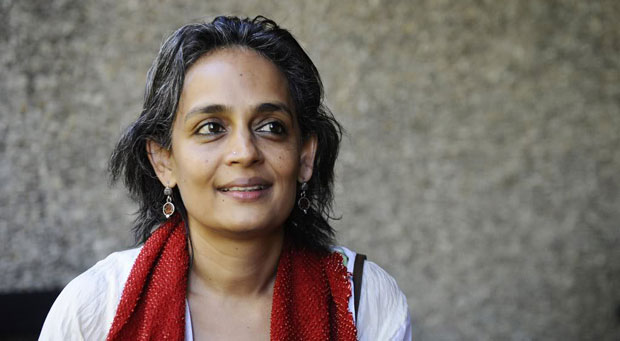
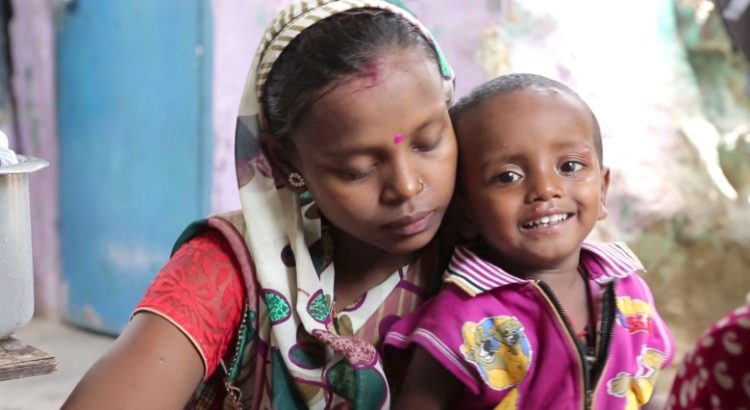
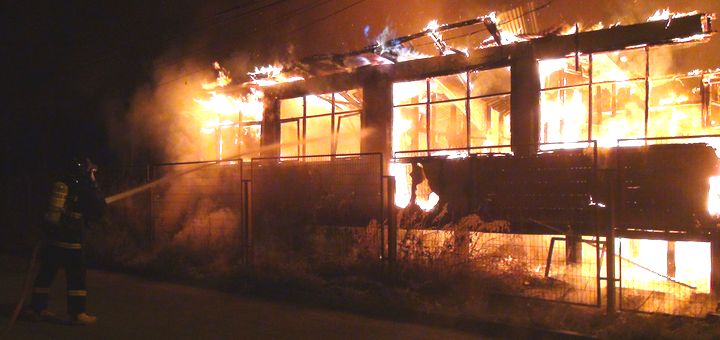
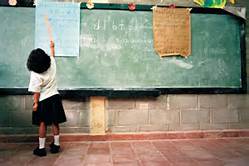
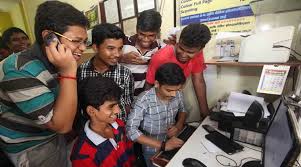







 Users Today : 4
Users Today : 4 Total Users : 35460677
Total Users : 35460677 Views Today : 5
Views Today : 5 Total views : 3419787
Total views : 3419787